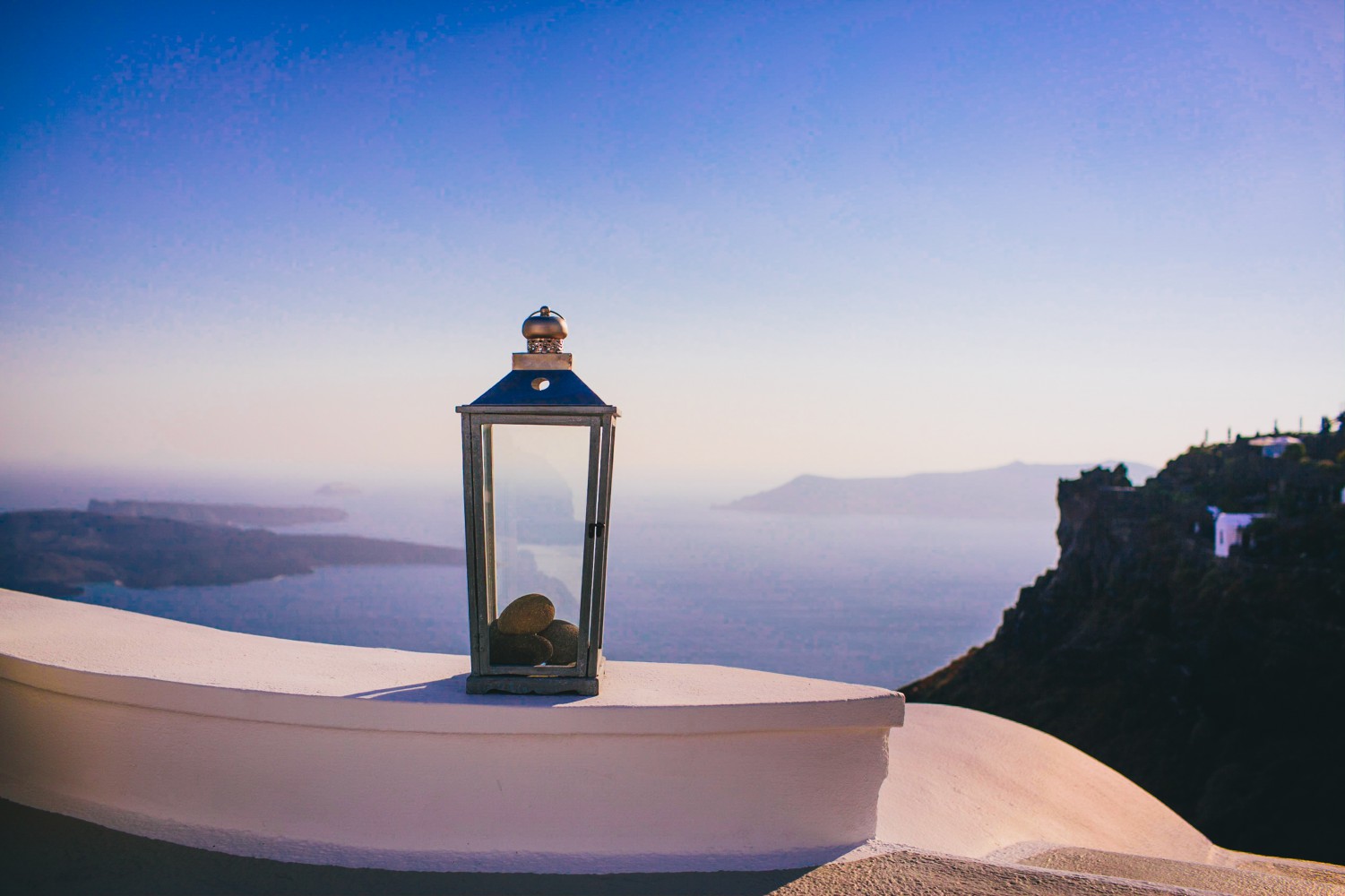What does ‘local’ mean within a destination whose entire identity revolves around attracting and serving outsiders? Santorini is an island well-known for its dependence on tourism. Life in a resort destination such as this is inextricable from the experience of overlooking a glistening blue caldera, with Hellenic hospitality the focal point for locals and visitors alike. And this is no ordinary shade of blue or average hospitality. These are experiences that could only be passed down by the gods — whom it feels still watch over one of Greece’s most picturesque islands.
This is an island of contradictions and mystery: it has been, in turn, rich and poor, built and destroyed, hidden and revealed. Even whispers of links to the lost city of Atlantis surround this supernatural land; perhaps the isle, formerly known as Thira, was the stage for mankind’s biggest disappearing act. History — natural, human, and mythological — is the central motif on show in Santorini, nature’s amphitheatre. Seducing at first sight, the Aegean Sea is flanked by steeply rising slopes of volcanic tephra, a mantle of tiered pastel-hued villages its captive audience. Taking it in, one might even conceive the gods are at play — just as they were around 1613 B.C., when they first vented their anger on the island’s Bronze Age inhabitants.
… [T]here occurred violent earthquakes and floods; and in a single day and night of misfortune all your warlike men in a body sank into the earth, and the island of Atlantis in like manner disappeared in the depths of the sea.
The Minoans were authoritative figures within the Mediterranean and are thought to be among the most powerful of ancient civilisations: footprints of their influence have been left all across the region’s coastlines. Indeed, Minoan arts and pottery dominated maritime trade, having been discovered as far away as Egypt. However, great power can give rise to great arrogance, and one version of the Atlantis legend has it that Zeus and the other gods felt that the Minoans were becoming a race consumed by hubris and greed, stealing the limelight — so they had to be wiped out.
Once a circular land mass, a massively explosive Plinian eruption blew through the island’s centre, ripping apart its left side. The centre filled with water, forming the caldera that we see today. The so-called ‘Minoan eruption’ was one of the most powerful in human history, estimated by geologists to have exerted energy equivalent to that of hundreds of atomic bombs in only a fraction of a second. However, without written records of the eruption, mystery lingers over what happened to the inhabitants of the land: no human remains dating from that time have ever been found in the area, so it is suspected — or hoped — that they may have escaped.
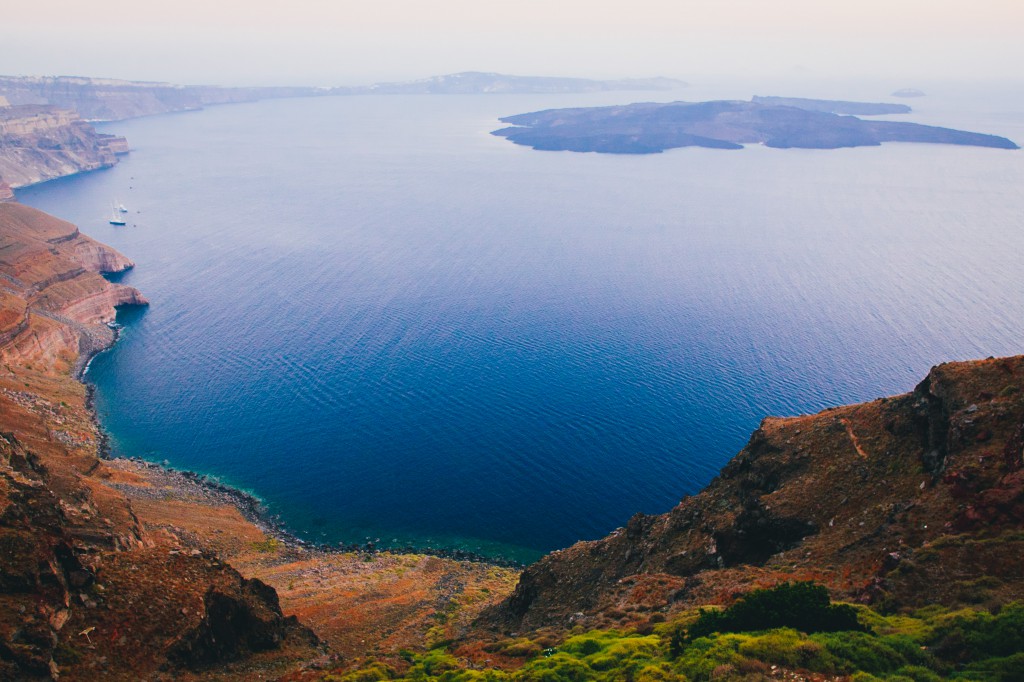
By the 13th century, the island was inhabited once more. First the winemaking Phoenicians — who lasted 100 years before the Lacedaemonians supplanted them — then the Romans, Byzantines, and Franks. The Venetians followed, christening the island ‘Santorini’ after the chapel of Saint Irene, located in a small bay where they first moored their boat upon arrival at the island. The Turks were next in line, with this cycle of ever-changing ownership finally ending in 1912 when Santorini was annexed by Greece.
The island then enjoyed a period of peace and the fruits of expansion in commercial shipping, tomato processing, wine making and textile production. The gods, however, had other plans. Having taken to the stage again with several eruptions over the centuries, they finally commanded the desired attention with the major earthquake of 1956, which sent a 30 metre high tsunami crashing onto the southern shores of Amorgos. Santorini suffered major damage to its infrastructure and a decrease in population, with many people fleeing both the physical aftermath of the event and its economic effects. However, in the early 1970s, a solution was decided upon: Santorini would place its destiny in the hands of the tourism industry.
So if anyone is to declare how the all was in this way genuinely born, he must also mix in the form of the wandering cause — how it is its nature to sweep things around. In this way, then, we must retreat, and, by taking in turn another, new beginning suited to these very matters, just as in what was before us earlier, so too in what is before us now, we must begin again from the beginning.
It was around this time that excavations began in Akrotiri, led by archaeologist Spyridon Marinatos. These culminated in the discovery of a remarkably well-preserved city that had been buried by the great Minoan eruption. The find revealed the civilisation of the Bronze Age Minoans, one whose technological structures were thousands of years ahead of their time: the excavations displayed an incredibly advanced comprehension of architecture, evidenced in earthquake-proof multi-storey residences complete with plumbing systems to deliver fresh water and remove waste.
Contemporary Santorini reflects a process of destruction, rediscovery and rebuilding, built on a convergence of myth and legend with historical fascination and natural wonder. All of this is channelled into the tourism on which the island’s economy is reliant, with Santorini attracting over 1.9 million visitors in 2013 alone, together with a plethora of transient workers.
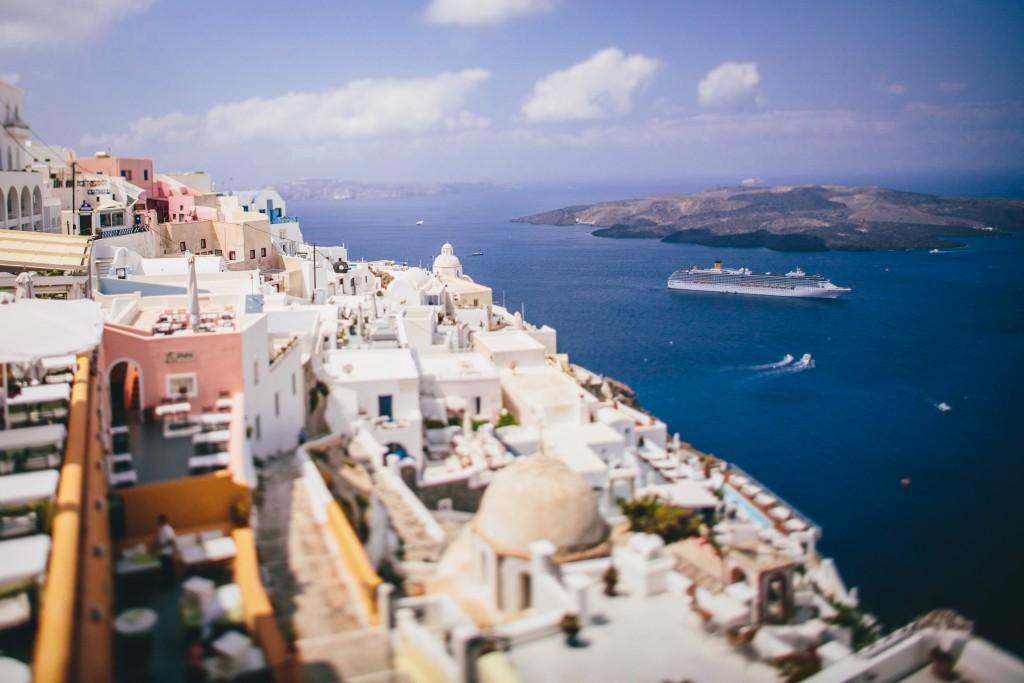
There is a massive range of boutique luxury resorts to choose from, boasting spectacular views of the caldera coupled with service that makes us feel like Greek gods reincarnated. Days are spent indulging the senses: lying on white-washed terraces, sitting — champagne flute in hand — by infinity pools skimming the crater rim, or being gently hypnotised by the caldera’s magical waters at sunset. There is plenty of time to reflect on the beauty and tragedy that is Santorini.
There are also opportunities to get lost in the many village alleys, stumbling upon little restaurants, rooftop bars, and arts and crafts stores. Alternatively, one can opt to play archaeologist for the day, discovering the excavations of the lost city in Akrotiri. The island has also become a prime attraction for couples from all over the world, who want to be a part of Santorini’s romance by getting married atop a white terrace above the Aegean Sea surrounded by blue-capped buildings.
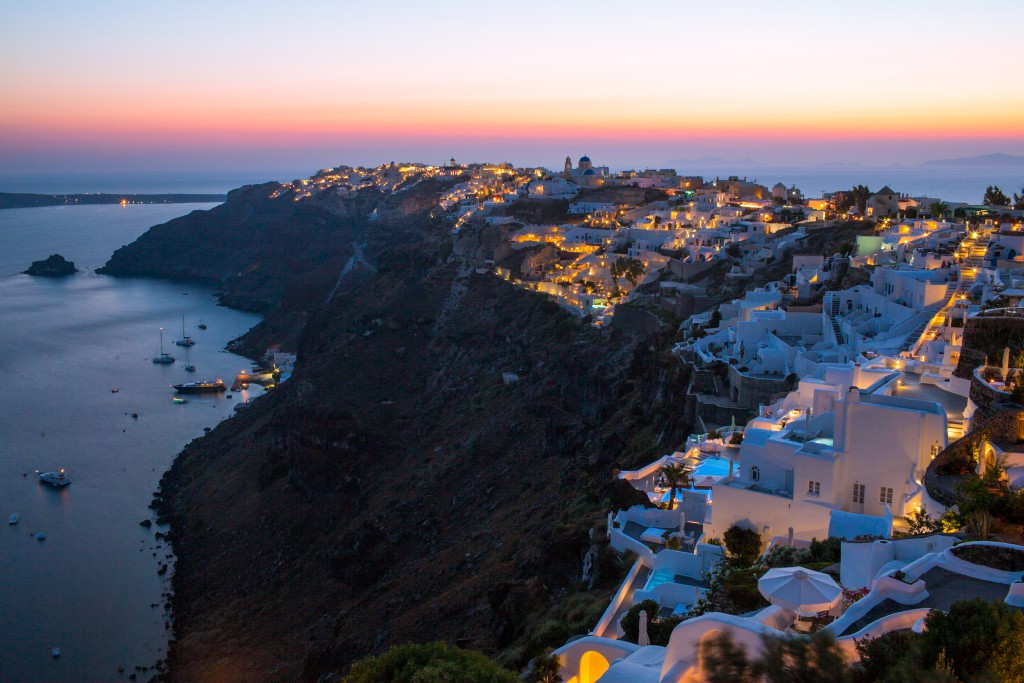
For the epicurean traveller, Santorini is heaven. The island belies Greece’s association with ouzo and pine-infused retsina, with the roots of indigenous white grape varieties such as Assyrtiko, Athiri and Aidani having survived over more than a century in volcanic soils that make the vines immune to phylloxera. There is unalloyed magic in every sip: if we would like to drink to history, then appropriately, in Santorini we can actually drink history itself.
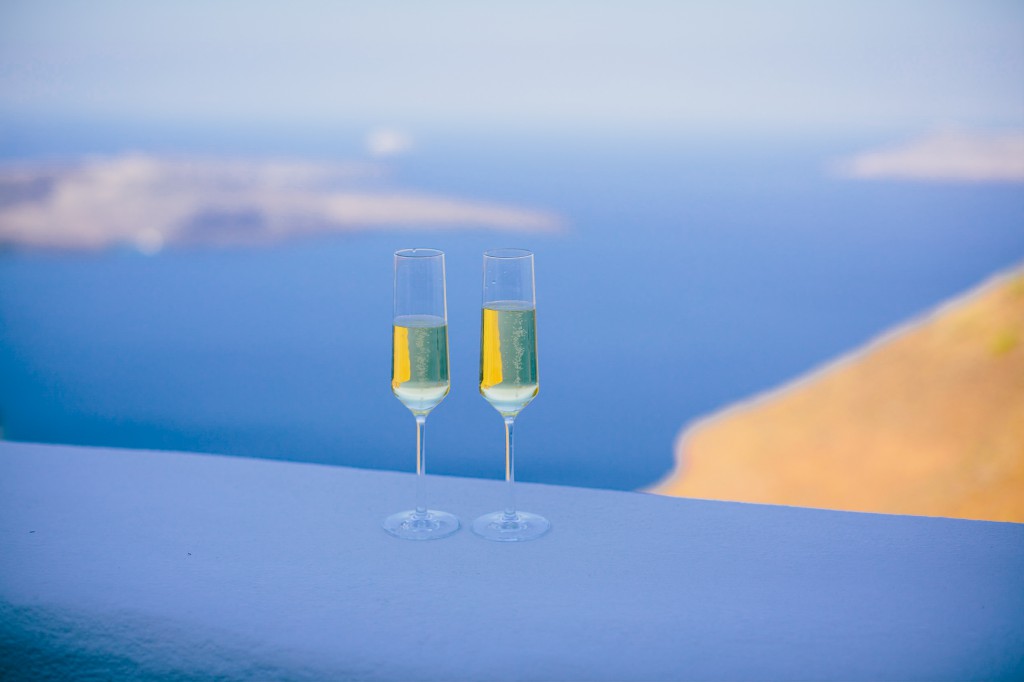
‘Local’ here is a mixture of elements, with environmental destruction engendering the loss of civilisations and giving rise to new opportunities rising literally from the ashes, the island’s present-day inhabitants coming and going on cue. Finally, the gods have had their way with Santorini — their power is at play for the world to watch. Just sit back, sip slowly and enjoy the show.Photos by Brian Furbush
